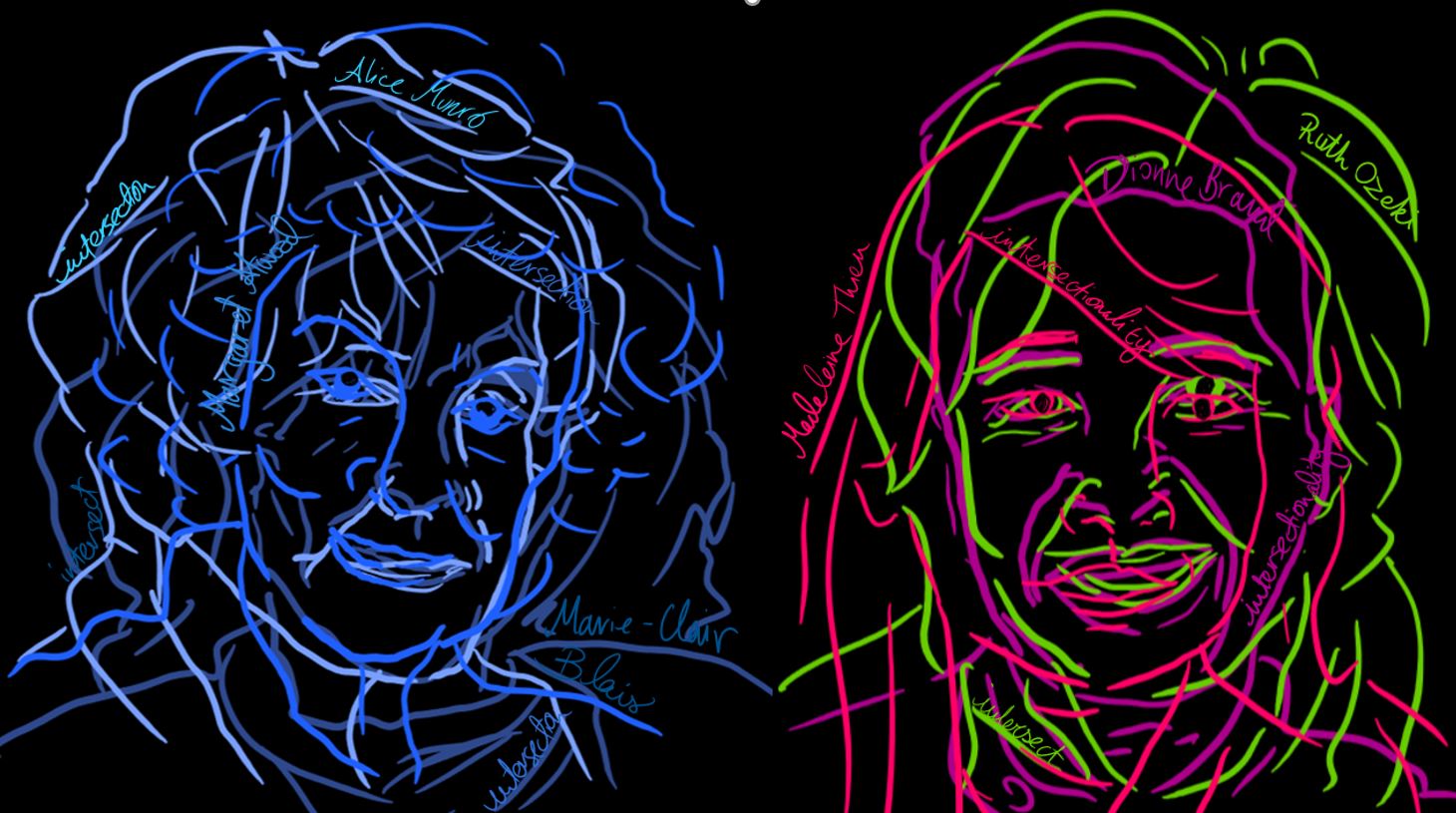Description: Whose voices make up Canada? In my project, I explore how feminist Canadian authors’ identities, made up of diverse factors like gender, race, sexuality, and ethnicity, shape the Canadian literary canon and understandings of “Canadian-ness.” I have layered line portraits of three authors: Alice Munro, Margaret Atwood, and Marie-Claire Blais on the left of this infographic to show the brilliant history on which contemporary Canadian literature rests. I represented these authors in shades of blue to highlight how, although incredibly talented, a portrait of the CanLit canon overemphasizes their perspectives and misses the rich diversity that makes up Canada today. On the right, I showcase the faces of a new generation of voices that continue to redefine the Canlit canon. I represented Dionne Brand, Ruth Ozeki, and Madeleine Thien in bright, contrasting colours to show the variety of voices and experiences these authors represent. I chose to layer the faces of these authors because my project takes a layered approach to canon building. I focus on how different parts of these authors’ identities intersect to create each of their unique points of view. By thinking in intersections, my research explores how the diverse stories of the new CanLit canon shape our identity as a multicultural society.
Why did you conduct this research? As global movements across the world fight for racial and gender equality, studying the formation of our cultural legacy is essential for a more comprehensive understanding of our current historical moment.
Technique: I used a stylus to draw line portraits of the authors I study on my tablet and then layered the images on top of each other to highlight how my research explores the ways different voices mingle and interact to create the CanLit canon.
Acknowledgements: This work was part of my SSHRC funded master’s thesis in the University of Toronto’s English Department.

